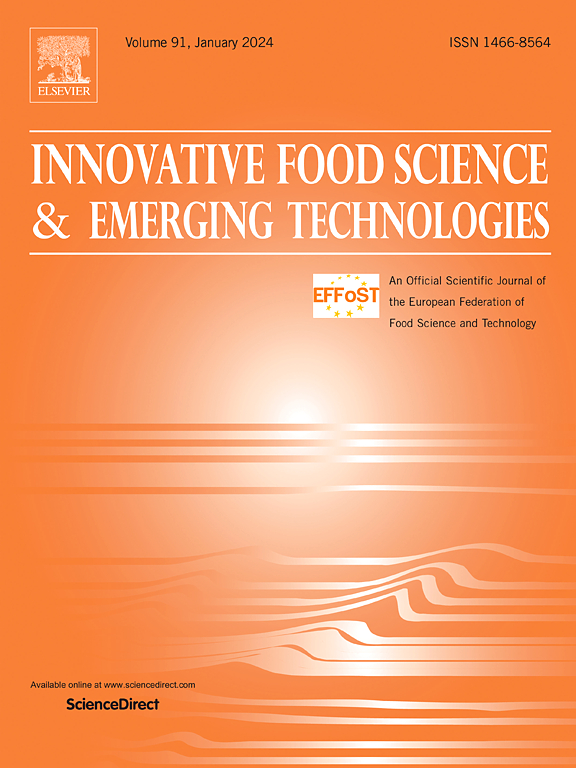Experimental and computational study of synchrotron X-ray micro-computed tomography imaging in peas and pinto beans after radiofrequency heating
IF 6.3
1区 农林科学
Q1 FOOD SCIENCE & TECHNOLOGY
Innovative Food Science & Emerging Technologies
Pub Date : 2025-04-28
DOI:10.1016/j.ifset.2025.104033
引用次数: 0
Abstract
Radiofrequency heating is volumetric heating based on the electrical properties of the sample; therefore, it is expected to generate micro explosions in the biological materials due to the presence of moisture under high power conditions. These micro explosions lead to micropore development and expansion of existing pores. The development of micropores in pinto beans and peas due to RF heating was characterised using a non-destructive BMIT beamline at the Canadian Light Source (CLS). Three-dimensional images were rendered from the X-ray images of the samples using BIOMEDISA, and the data were processed for statistical analyses and mathematical modelling to visualize the RF heating mechanism using MATLAB. The analyses included determining the pore volume fraction, porosity of different pinto beans and peas segments, and pore size distribution. This study validated the hypothesis that treating whole peas and beans with RF heating (dielectric heating) induces the formation of micropores.

射频加热后豌豆和斑豆同步加速器x射线微计算机断层成像的实验与计算研究
射频加热是基于样品电性能的体积加热;因此,在高功率条件下,由于水分的存在,预计会在生物材料中产生微爆炸。这些微爆炸导致了微孔的发育和现有孔隙的扩张。在加拿大光源(CLS)下,使用非破坏性BMIT光束线表征了斑豆和豌豆中由于射频加热而形成的微孔。利用BIOMEDISA软件将样品的x射线图像绘制成三维图像,利用MATLAB软件对数据进行统计分析和数学建模,可视化射频加热机理。分析包括测定不同品花豆和豌豆段的孔隙体积分数、孔隙率和孔径分布。本研究验证了射频加热(电介质加热)处理整个豌豆和豆类诱导微孔形成的假设。
本文章由计算机程序翻译,如有差异,请以英文原文为准。
求助全文
约1分钟内获得全文
求助全文
来源期刊
CiteScore
12.00
自引率
6.10%
发文量
259
审稿时长
25 days
期刊介绍:
Innovative Food Science and Emerging Technologies (IFSET) aims to provide the highest quality original contributions and few, mainly upon invitation, reviews on and highly innovative developments in food science and emerging food process technologies. The significance of the results either for the science community or for industrial R&D groups must be specified. Papers submitted must be of highest scientific quality and only those advancing current scientific knowledge and understanding or with technical relevance will be considered.

 求助内容:
求助内容: 应助结果提醒方式:
应助结果提醒方式:


